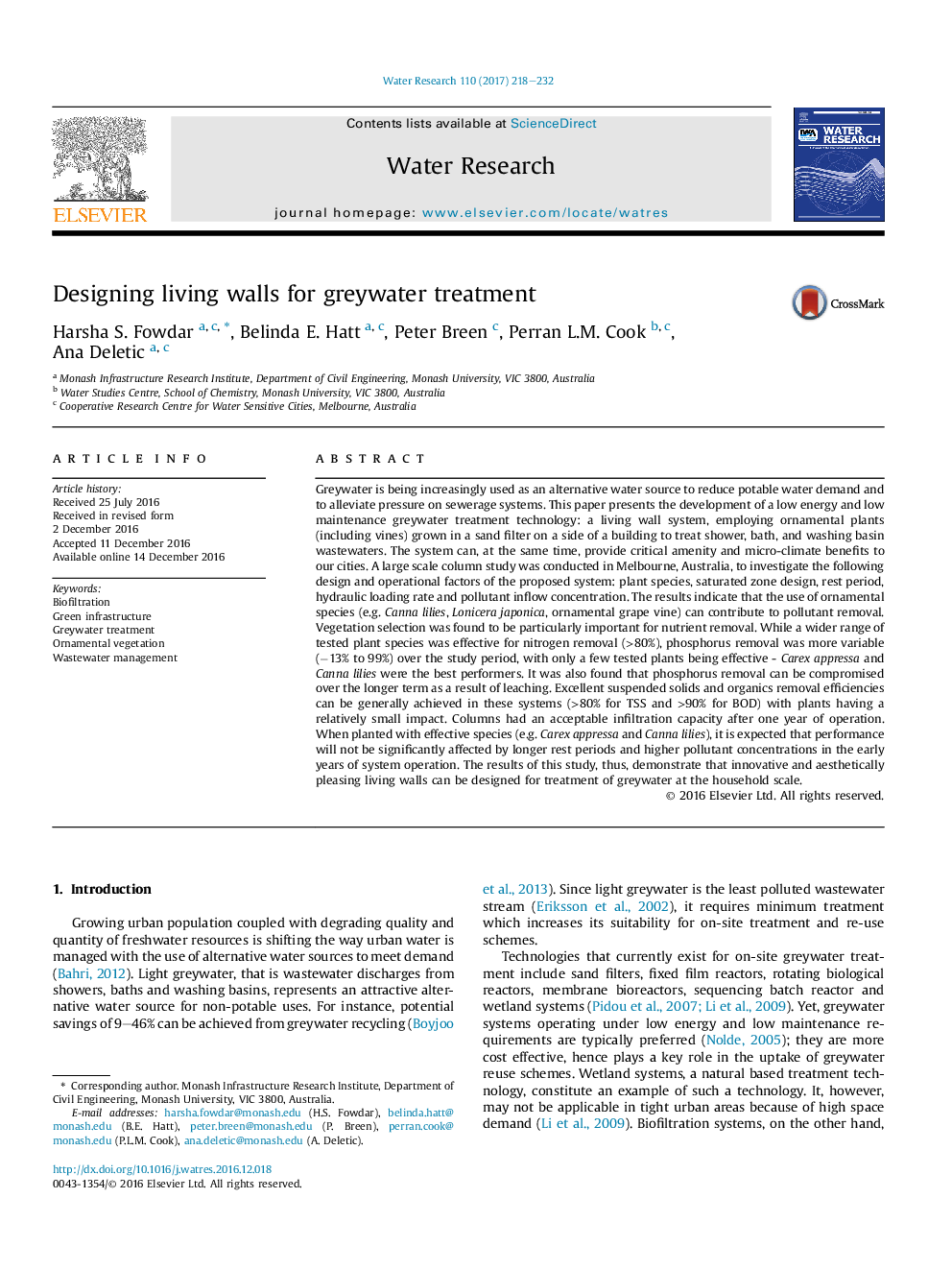| کد مقاله | کد نشریه | سال انتشار | مقاله انگلیسی | نسخه تمام متن |
|---|---|---|---|---|
| 5758969 | 1623058 | 2017 | 15 صفحه PDF | دانلود رایگان |
- The hydraulic and pollutant removal performance of an innovative urban greywater treatment system are examined.
- >80% and >90% removal efficiencies can be achieved for TSS and BOD respectively.
- Nitrogen and phosphorus removal varied depending on plant type.
- Use of ornamental flowers and climbers can contribute to system functioning.
- Selected designs showed resilience against variations in operating conditions.
Greywater is being increasingly used as an alternative water source to reduce potable water demand and to alleviate pressure on sewerage systems. This paper presents the development of a low energy and low maintenance greywater treatment technology: a living wall system, employing ornamental plants (including vines) grown in a sand filter on a side of a building to treat shower, bath, and washing basin wastewaters. The system can, at the same time, provide critical amenity and micro-climate benefits to our cities. A large scale column study was conducted in Melbourne, Australia, to investigate the following design and operational factors of the proposed system: plant species, saturated zone design, rest period, hydraulic loading rate and pollutant inflow concentration. The results indicate that the use of ornamental species (e.g. Canna lilies, Lonicera japonica, ornamental grape vine) can contribute to pollutant removal. Vegetation selection was found to be particularly important for nutrient removal. While a wider range of tested plant species was effective for nitrogen removal (>80%), phosphorus removal was more variable (â13% to 99%) over the study period, with only a few tested plants being effective - Carex appressa and Canna lilies were the best performers. It was also found that phosphorus removal can be compromised over the longer term as a result of leaching. Excellent suspended solids and organics removal efficiencies can be generally achieved in these systems (>80% for TSS and >90% for BOD) with plants having a relatively small impact. Columns had an acceptable infiltration capacity after one year of operation. When planted with effective species (e.g. Carex appressa and Canna lilies), it is expected that performance will not be significantly affected by longer rest periods and higher pollutant concentrations in the early years of system operation. The results of this study, thus, demonstrate that innovative and aesthetically pleasing living walls can be designed for treatment of greywater at the household scale.
394
Journal: Water Research - Volume 110, 1 March 2017, Pages 218-232
